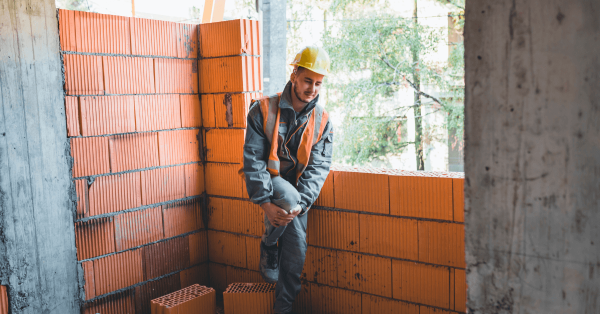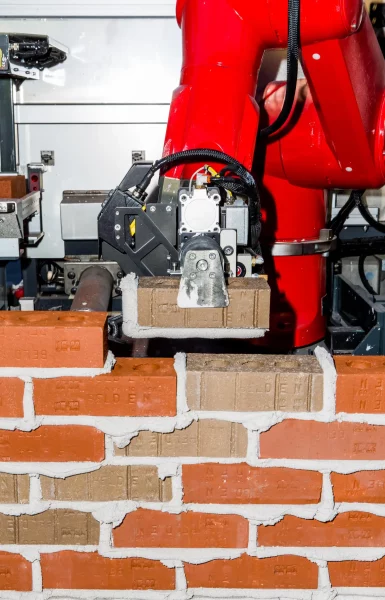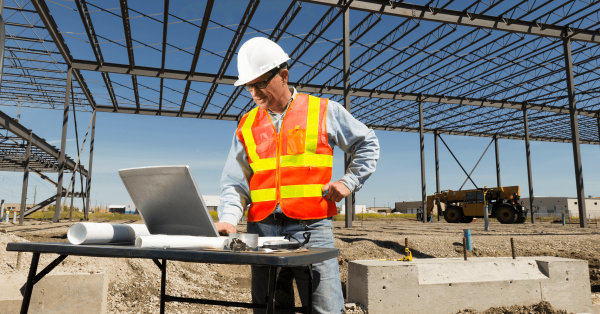The construction industry is experiencing a revolutionary change with the advent of the bricklaying robot. This traditionally labor-intensive trade, long defined by manual skill and physical effort, is stepping into a new era marked by technological innovation. The rise of the bricklaying robot prompts important questions about the future of bricklayers and the wider construction workforce. In this blog, we explore the transformative effect of the bricklaying robot on the industry, examining both its impact and the strategies needed for a smooth and equitable transition.
Demanding the Toughest: The Gritty Reality of Bricklaying

- Musculoskeletal disorders: Such as back pain and joint aches, often exacerbated by the repetitive movements and sustained awkward postures inherent in bricklaying.
- Respiratory issues: Resulting from prolonged exposure to dust and silica particles, leading to conditions like silicosis and chronic obstructive pulmonary disease (COPD).
- Increased risk of injuries: The physically demanding nature of bricklaying raises the likelihood of workplace accidents and injuries.
Enter the Bricklaying Robot: A Dawn of Efficiency and Accuracy
 The emergence of the bricklaying robot represents a significant shift in construction methods. These innovative machines offer:
The emergence of the bricklaying robot represents a significant shift in construction methods. These innovative machines offer:
- Enhanced Speed and Output: Bricklaying robots can lay up to 3,000 bricks per day, significantly surpassing the productivity of an average bricklayer.
- Unwavering Accuracy: Robotic technology ensures each brick is placed with precision, resulting in consistent, high-quality construction.
- Reduced Labour Costs: The introduction of bricklaying robots can lead to substantial long-term savings, offsetting their initial investment costs.
The Future of Bricklaying: Adapting to Automation

- Reskilling and Upskilling: Bricklayers have the opportunity to develop new skills in operating and maintaining bricklaying robots.
- Diversifying Skill Sets: Expanding expertise into other areas of construction enhances adaptability and employability in an evolving industry.
- Entrepreneurial Opportunities: Experienced bricklayers can use their industry knowledge to start innovative construction ventures in an era increasingly influenced by bricklaying robots.
Ensuring a Responsible Transition with Bricklaying Robots
A thoughtful and ethical approach is vital for integrating bricklaying robots into the construction sector:
- Government Policies: Encouraging investment in retraining programs for the workforce impacted by automation.
- Industry Collaboration: Construction companies, unions, and educational institutions should collaborate to develop comprehensive training programs and career pathways for bricklayers in this new technological era.
- Early Intervention: Proactively preparing future construction professionals for a landscape that includes robotic technologies like bricklaying robots.
Conclusion: Embracing a Collaborative Future with Bricklaying Robots
The future of bricklaying, in conjunction with bricklaying robots, hinges on a balanced collaboration between human skill and robotic efficiency. By investing in upskilling initiatives and embracing technological advancements, the construction industry can pave the way for a sustainable and innovative future, where bricklaying robots and human workers operate in synergy.
Frequently Asked Questions:
A bricklaying robot is an automated machine that can lay bricks with high speed and precision. Using advanced sensors and programming, these robots handle the repetitive task of bricklaying, significantly boosting efficiency and consistency in construction projects.
Bricklaying robots can lay up to 3,000 bricks per day, which is significantly higher than the average output of human workers. This increased speed reduces project timelines, allowing for faster completion and the ability to take on more projects.
Bricklaying robots use cutting-edge technology, such as laser-guided systems and precise calibration, to ensure each brick is placed accurately. This high level of precision results in uniform and structurally sound walls, reducing the need for rework.
Although the initial investment in bricklaying robots can be high, the long-term savings are substantial. These robots reduce labour costs, minimise waste, and decrease project durations, leading to lower overall construction costs and increased profitability.
Bricklaying robots are designed to assist rather than replace human workers. While they take over repetitive tasks, human oversight is still crucial for operating, maintaining, and troubleshooting the robots, as well as handling complex construction activities that require a human touch.
The use of bricklaying robots significantly shortens project timelines. By working continuously without fatigue and at a much faster rate than human bricklayers, these robots help complete bricklaying tasks quickly, allowing for earlier project delivery and the ability to handle multiple projects concurrently.
Bricklaying robots enhance construction efficiency, leading to reduced waste from errors and material overuse. Their precision and consistency help minimise waste, supporting more sustainable construction practices and contributing to greener project outcomes.
The future of bricklaying robots looks promising, with ongoing advancements in robotics and AI technology. As these robots become more affordable and versatile, their adoption is expected to increase, transforming the construction industry by improving efficiency, quality, and sustainability.
Bricklaying robots take over physically demanding and repetitive tasks, reducing the risk of injuries related to manual bricklaying. By minimizing the need for workers to perform strenuous activities, these robots help create safer work environments and reduce health-related issues among construction workers.
Key features of bricklaying robots include high-speed bricklaying capabilities, precise placement technology, adaptability to different brick sizes and patterns, and advanced sensors for accuracy. These robots are designed to integrate seamlessly into construction workflows, enhancing overall productivity and quality.
Stay Updated with Danterr!
Subscribe to Our Newsletter for the Latest in Construction Solutions
